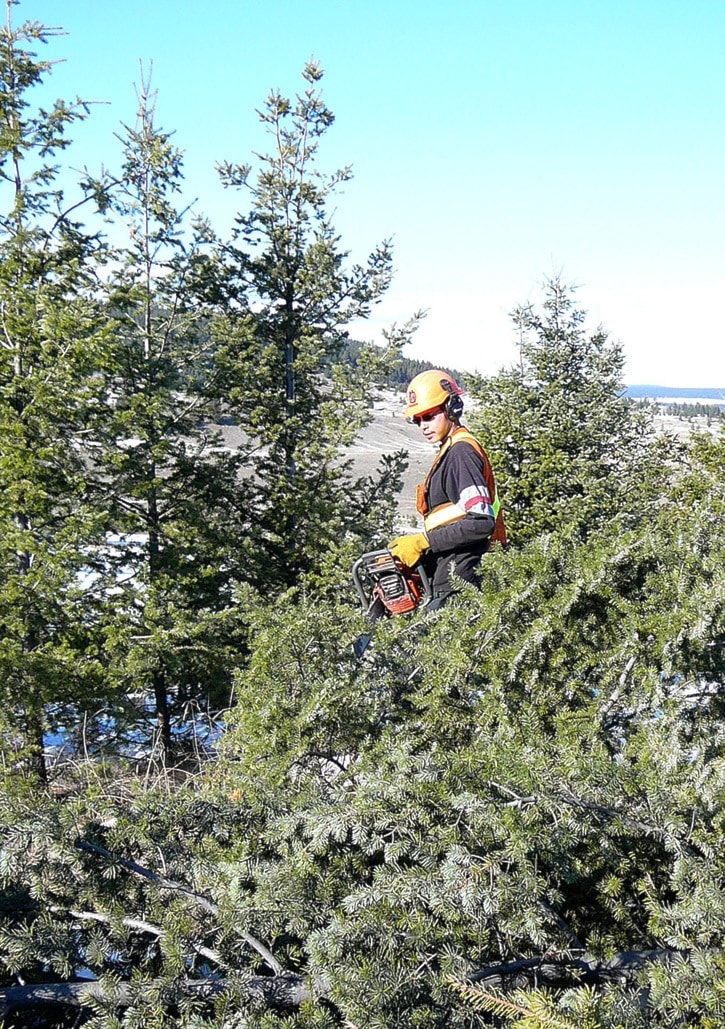More than a dozen government agencies and organizations are working together to restore ecosystems in the Cariboo-Chilcotin.
Using a combination of selective thinning and controlled burning, the Cariboo Chilcotin Ecosystem Restoration Steering Committee (CCERSC) have been working together since 2008.
Prescribed burning is used by the Wildfire Management Branch’s Fire Centre as a way to do some training, says the Fraser Basin Council.
This shared cost strategy makes ecosystem restoration less costly, resulting in more sites being restored.
The CCERSC works to restore habitat in 100 Mile, Williams Lake, Quesnel and surrounding areas.
Wildfire is part of the natural cycle for ecosystems in B.C.’s interior and helps the divisions between the ecosystems remain productive.
For example, wildfires ensure that grasslands and open forests — forests made up of large trees with open area in between — remain a mix of the different plant species for the animals who rely on them.
Without fire maintaining the grasslands, small trees begin to take over and eventually fill in the grass or open forest area, creating a densely-treed forest.
Infilling results in a reduction of ecosystem resiliency to climate change pressures and a loss of biodiversity.
Since the early 1900s, forest encroachment has been occurring in many areas throughout the province.
Before this time period many more “cool” fires occurred every seven to 20 years, killing off most of the small, thin-barked trees, and maintaining open forests with grassy under-stories that merged with native grasslands.
Covering less than one percent of B.C., native grasslands are home to the highest diversity of at-risk plant and animal species.
Almost 40 per cent of all B.C.’s species at risk live in grassland ecosystems. These include a variety of plant and insect species as well as: the grasslands badger, the rubber boa snake, the long-billed curlew, the sharp tailed grouse, the big horn sheep and the Western small-footed myotis bat, which is the smallest bat in B.C. weighing in at less than a nickel.
With continued habitat loss, the population of fascinating animals like these will continue to decline.
In response to the loss of unique plants, animals, and habitats, increasing measures are being taken to re-establish ecosystems through controlled burning.
Controlled burning mimics the natural cycle of wildfire under controlled circumstances. In some cases, controlled burning cannot be undertaken without prior thinning of the forests.
A combination of burning and thinning is an important type of ecosystem restoration in B.C.’s interior.
The benefits of ecosystem restoration reach far beyond ecology. Restoration provides many economic, social and cultural benefits such as:
• Recognition of managed fire as an inherent First Nation land use technique;
• Reduction of excessive fuel loads to lessen catastrophic wildfires;
• Improved air quality by managing emissions through prescribed fire opposed to emissions resulting from a wildfire potentially occurring during less favourable atmospheric conditions;
• Improved long-term timber harvest values through spacing over-dense stands while also providing a potential bioenergy source;
• Increased natural forage to sustain wildlife and livestock and their related industries;
• Increased resilience of community watersheds to maintain potable water supplies;
• And improved recreational and aesthetic values.
The Cariboo Chilcotin Ecosystem Restoration Steering Committee is a collaborative initiative between:
• The Tsilhqot’in, Carrier Chilcotin and Northern Shuswap First Nations;
• Four cattlemen’s groups (Cariboo-Chilcotin, Clinton, Quesnel and South Cariboo;
• The Cariboo Fire Centre;
• The Grasslands Conservation Council of BC;
• The Cariboo Chilcotin Conservation Society;
• BC Wildlife Federation;
• The Department of National Defence;
• Ministry of Forests, Range and Natural Resource Operations;
• Ministry of Agriculture;
• Ministry of Environment;
• Fraser Basin Council;
• And UBC’s Alex Fraser Research Forest.
The restoration of grasslands and open forests contributes to the region’s ecological, economic and social resiliency. Restoration has benefits for: ranching, industrial and community forestry, traditional land-use, hunting, guide-outfitting, tourism, recreation and communities in general.
Through ecosystem restoration management, controlled burning in areas close to communities mitigates wildfire risks. All communities and First Nation governments are notified through the appropriate channels when burns are scheduled in their area or territory.
Would you like to know more about ecosystem restoration in the Cariboo Chilcotin? Please contact erobinson@fraserbasin.bc.ca.
